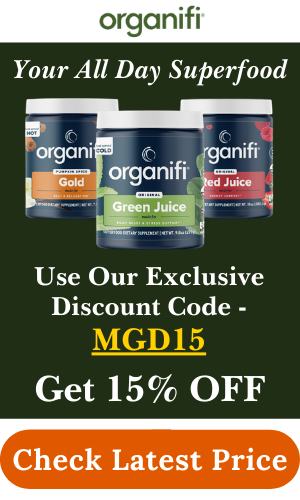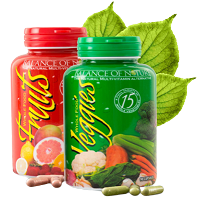There are types of fiber found in vegetables and whole grains that our bodies can’t digest. Its often called roughage. Contrary to foods that break down in the intestine, bacteria in the large intestine ferment fiber. This fermentation process is beneficial for the bacteria in our gut, acting as prebiotics and providing them with nutrition.
Even though its important for our overall health to consume fermentable fiber, many adults still don’t meet their daily fiber requirements. This lack of fiber intake can have effects on our diet. To make sure we’re getting fiber every day, a high-fiber food guide can be a tool. By following this guide, we can easily incorporate the recommended amount of fiber into our meals.
It’s worth noting that not all types of fiber are the same. There are categories of fiber, some of which offer nutritional benefits more than others.
Top 10 High-Fibre Foods to Include in Your Diet
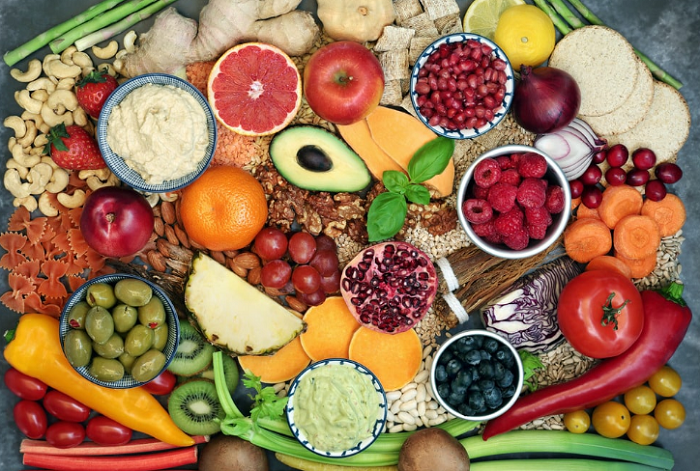
Types of Fiber
Soluble Fiber
When it comes to fiber, there are two types: insoluble and insoluble. Soluble fiber, which can dissolve in water, offers metabolic health benefits. It forms a gel substance when it interacts with fluids and helps maintain a healthy balance of intestinal flora. Some examples of foods that contain fiber are fruits, barley, beans, lentils, and oats.
Insoluble Fiber
On the other hand, insoluble fiber does not dissolve in water and remains unchanged in fluids. It acts as a bulking agent. Can even have a laxative effect. Foods rich in fiber include wheat or bran products, potatoes, cauliflowers, and nuts.
To ensure a balanced diet, it’s important to include both insoluble and insoluble fiber. Different plant-based foods contain varying amounts of these two types of fiber. If a food product is marketed as high in fiber, the nutrition label should specify the quantity of insoluble fiber per serving.
In summary, we have insoluble types of fibers with their own unique properties and benefits. Soluble fiber found in fruits, barley, and oats dissolves in water while supporting the environment.
On the side, there is another type of fiber called fiber, which can be found in whole wheat products, potatoes, and nuts. Unlike fiber, this type doesn’t dissolve in water. Adds bulk to your diet and aids in digestion. It’s important to have a diet that includes both insoluble and insoluble fibers to ensure overall health and well-being.
Benefits of Fiber for Health
Fiber is not just known for its ability to aid digestion and relieve constipation; it offers numerous other advantages as well.
Effective Weight Management
While fiber itself may not directly cause weight loss, it has a satiating effect that helps prevent overeating. By reducing hunger between meals, it can help control calorie intake.
Maintaining Healthy Cholesterol Levels
Soluble fiber transforms into a gel substance during digestion, which slows down the process. This gel-like material traps. Prevents its absorption back into the bloodstream. As a result, excess cholesterol is eliminated from the body through bowel movements.
Preventing Blood Sugar Spikes
Including fiber in your meals from cereals can reduce the risk of developing type 2 diabetes. It also helps regulate fasting blood sugar levels. Unlike other types of carbohydrates, fiber cannot be. Digested by the body. As a result, it doesn’t cause blood sugar levels to rise.
Supporting Regular Bowel Movements
Fiber adds bulk and softness to stool, which helps promote bowel movements. When stool is bulkier and easier to pass, the chances of experiencing constipation are reduced. Additionally, fiber absorbs water, providing volume to stools and aiding in the prevention of watery stools.
In summary, fiber offers benefits beyond digestion and relief from constipation. It plays a role in weight management by curbing overeating and preventing calorie intake. Soluble fiber helps maintain cholesterol levels by trapping cholesterol in the intestines and preventing its absorption into the bloodstream. It also assists in preventing spikes in blood sugar levels, making it particularly beneficial for individuals at risk of type 2 diabetes. Furthermore, fiber promotes bowel movements by softening stool and adding bulk, thereby reducing the likelihood of both constipation and stools. Adding fiber-rich foods to your diet can contribute significantly to your lifestyle.
Top 10 High-Fiber Foods
High-fiber foods contain 20% of the recommended daily value (DV) of dietary fiber per serving. On the other hand, foods with more than 5% fiber are considered poor sources of fiber. Here are ten foods that are packed with fiber:
Oats
Oats are a source of fiber. Consuming 3 grams of fiber from oats (to three servings of 28 grams each) can help reduce total and LDL cholesterol levels by approximately 0.13 mmol/L. Raw oats provide 10.1 grams of fiber per 100 grams, or 8.18 grams per 1 cup (81 grams) of raw oats. You can use oats in recipes like cookies, muffins, and granola. Enjoy them as a cereal option. Oats not only contain levels of fiber but also have the ability to lower cholesterol and promote heart health due to their beta-glucan content. They also offer vitamins, minerals, and antioxidants that contribute to well-being while providing energy release for better blood sugar regulation.
Quinoa
Quinoa is considered a pseudo-cereal that’s rich in both fiber and protein, making it an excellent choice for individuals following a plant-based diet. Uncooked quinoa contains 7 grams of fiber per 100 grams, while cooked quinoa has 2.8 grams of fiber per 100 grams. Additionally, quinoa provides all amino acids, making it a valuable source of plant-based protein. Fiber is beneficial for muscle development, helps you feel full, and provides vitamins and minerals.
Black Beans
When you cook beans, they contain 8.7 grams of fiber per 100 grams. Along with being high in fiber, black beans are low in fat. Are packed with antioxidants, iron, and folate. They support heart health, increase energy levels, and boost the system.
Read More: Protein Powders
Barley
Hulled barley is a source of beta-glucan fiber. Provides a significant amount of 17.3 grams of fiber per 100 grams. It’s a grain that can be used in salads, side dishes, soups, or stews. However, individuals with bowel syndrome (IBS) or a sensitive digestive tract should avoid consuming barley. Besides its fiber content, hulled barley also offers minerals like selenium and manganese that promote function and bone health.
Nuts and Seeds
Nuts and seeds are sources of fiber.
Here are a few examples of nuts and seeds with high fiber content:
Almonds; 12.5 grams of fiber per 100 grams.
Pecans; 9.6 grams of fiber per 100 grams.
peanuts; 8 grams of fiber per 100 grams.
Dried chia seeds; 34.3 grams of fiber per 100 grams.
Flaxseeds; 27.3 grams of fiber per 100 grams.
Apart from being rich in fiber, almonds, pecans, peanuts, chia seeds and flaxseeds also contain fats, omega 3 fatty acids. These fats have effects on heart health. Help reduce the risk of cardiovascular diseases.
Navy Beans
Navy beans, also known as Pea beans or White pea beans belong to the bean family. Cooked unsalted navy beans provide around 10.5 grams of fiber per every 100 grams consumed. They are relatively easier to digest compared to chickpeas and kidney beans while offering a source of plant based protein that supports muscle repair and growth.
Read More: Balance of Nature Fruits and Veggies
Kidney Beans
Kidney beans consist primarily of carbohydrates and dietary fiber. Also contribute an amount of protein to one’s diet. Boiled kidney beans offer 6.4 grams of fiber for every 100 grams consumed. However, it is worth noting that some individuals may experience diarrhea or flatulence due to the presence of alpha-galactosidase fibers found in kidney beans.
Kidney beans contain nutrients like iron, magnesium, and potassium that’re beneficial for promoting healthy blood, muscle function, and regulating blood pressure.
Broccoli
Broccoli is a vegetable with calories that provides 2.6 grams of fiber per 100 grams. This type of vegetable is rich in antioxidants and vitamin K supporting bone health, immune function and maintaining skin. When buying broccoli it’s best to avoid pieces that’re weak or showing signs of yellowing or wilting.
Apples
Apples are loved fruits globally. Are known for their high content of soluble fiber called pectin. A sized apple with the skin intact offers around 4.37 grams of fiber. Pectin brings health benefits such as improved digestion and heart health. Apples are also packed with vitamin C which supports skin health and boosts the system.
Banana
A large banana contains 3.54 grams of fiber. Unripe or green bananas also contain a small amount of starch, which functions similarly to fiber in that it is difficult for the body to digest. Bananas can be conveniently added to meals, smoothies, or used as snacks to increase your fiber intake. They are also a source of potassium, which’s essential for proper muscle and nerve function as well as regulating blood pressure.
Read More: High-Protein Fruits
Summary
A diet that includes foods high in fiber is crucial for maintaining health. These ten delicious and nutritious foods are sources of fiber. Starting with oats, which’re well known for their ability to lower cholesterol levels. Quinoa, black beans, and barley provide a combination of fiber, protein, and essential nutrients that promote heart health, boost energy levels, and strengthen the system. Nuts and seeds like almonds, pecans, peanuts, chia seeds, and flaxseeds do not offer fiber. Also contain heart-healthy fats.
Navy beans and kidney beans are sources of protein as well as fiber; they support muscle growth while keeping the blood healthy. Broccoli, apples, and bananas not only contribute to your intake of vitamins but also provide antioxidants along with their high fiber content.
These fruits help improve bone health, aid digestion, and enhance the system. By including these high-fiber foods in your diet, you can take pleasure in supporting your well-being.
References:
https://www.ncbi.nlm.nih.gov/pmc/articles/PMC8625765/
https://www.ncbi.nlm.nih.gov/pmc/articles/PMC7074363/
https://www.medicalnewstoday.com/articles/289934
https://en.wikipedia.org/wiki/Barley
https://www.betterhealth.vic.gov.au/health/healthyliving/nuts-and-seeds
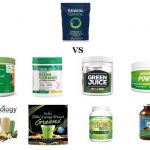
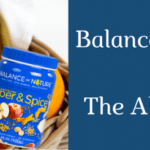
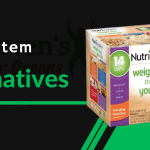
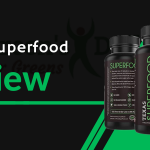

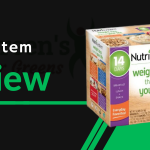
![Organifi Green Juice Reviews [USA] – Best Superfood Drink](https://mygreensdaily.com/wp-content/uploads/2020/04/organifi-new-featured-150x150.png)




